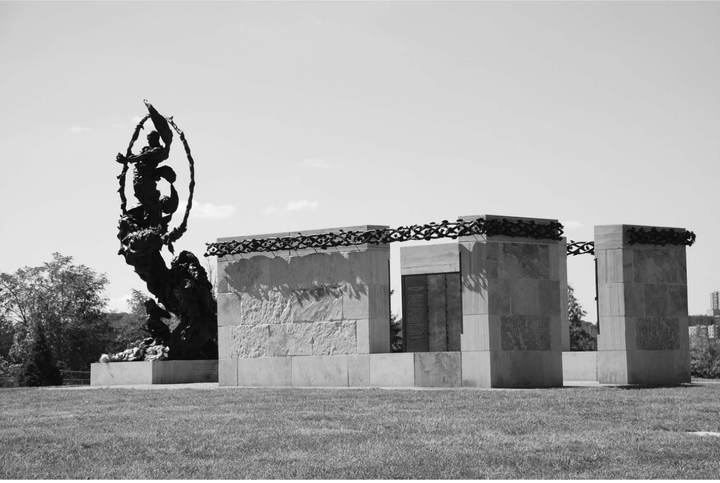Who’s to Say? “High” and “Low” Diglossic Variants as Segregants of Societies
This paper explores the forced development of language in a specific geography to abide by colonial standards, as well as how the imprint of the forced language gives rise to a new language community.

This report aims to enter into conversation with Penelope Eckert’s work with language shift in France. I intend to globalize the discussion about the role of colonialism in making tears in a community's linguistic web. I will also discuss how those tears turn to shreds once diglossia causes even more friction between various subsets of members in a speech community. That is to say, this paper will explore the forced development of language in a specific geography to abide by colonial standards, as well as how the imprint of the forced language gives rise to a new language community. Diglossia, throughout this report, shall be defined as the mutually exclusive existence of a “high” and “low” language variety which are used by either distinct groups of speakers or the same group, but in vastly distinct contexts. The terms “high” and “low”—commonly used in diglossia literature in reference to languages that are used in high and low-profile environments, respectively—will only be referred to in quotations in this report. This, perhaps, is a simple protest against the idea that one language might be “lesser than” another simply because the group speaking the language that is “more than” has ordained it to be so.
Eckert’s work, “Stigma and Meaning in Language Shift,” strives to derive the social causes by which speech communities developed a need for a “high” and “low” variety of their language. Eckert also argues that diglossia is an unsustainable means of communication because it separates speakers of a language into subgroups rather than encouraging them to communicate harmoniously and seamlessly with one another.
Eckert maintains that diglossia is not only disintegrating valid vernacular languages but that it also presents a “serious threat to self image and solidarity of the community” (Eckert 2018, 17). The key pillar of evidence for this piece is the erasure of vernacular languages and dialects—known as Gascon varieties—across the Occitania region of southern France. This erasure arose alongside increased civilian mobility into metropolitan areas of France, many of whom arrived in search of socioeconomic growth (Eckert 2018, 19). In particular, Eckert identifies the concept of “inside” and “outside” languages to explain the linguistic praxis of this migration. Eckert argues that the local Gascon variety of French spoken in villages was preferred and deemed the “inside” variant. However, the local speakers had no choice but to speak the “outside” language, the standard Parisian French, because it was the only language taught in schools. Students and local speakers would be punished if they tried to communicate in their native local language (Eckert 2018, 22).
Perhaps most importantly, Eckert argues that the problem with diglossia arises when speakers of the “high” variant—which they likely learned by being “favoured” by colonization—enter into conversations with speakers of the “low.” If the “high” variant speakers are educated and respectable, then the “low” speakers are automatically perceived as relatively uneducated and rather unpolished (Eckert 23). As a result, diglossia is claimed to be an unsustainable communication pattern for speakers of different backgrounds because it reinforces the social inequalities that break apart communities to begin with.
Eckert’s analysis of the dissemination of the French language across the region, now known as modern France, was robust and thorough, indicative of a solid study methodology. The logic for how and why Gascon variant speakers would have had to adopt French as a “high” language is solid, and is steadily rooted in a simple need for socioeconomic providence and a need to use language as a means to secure resources and opportunities. However, the France-specific nature of the research leaves a global perspective to be desired.
To begin the work of tackling that global perspective, another fascinating case study of a lingua franca with a distinct “high” and “low” variety is the use of English across Bangalore, India. Bangalore, or Bengaluru, is one of India’s largest metropolitan cities and is known as the nation’s Silicon Valley. As a result, the local community is made up of native speakers of dozens of languages. Bangalore is the capital city of Karnataka, so Kannada, the official language of Karnataka, is a natural addition to this pool of languages spoken in Bangalore. Along with Kannada, native Telugu speakers from the border states of Andhra Pradesh and Telangana live in Bangalore. Native Tamil and Malayalam speakers from Tamil Nadu and Kerala respectively, Karnataka’s southern neighbor states, are also added to this mix. Finally, Bangalore is also home to native Hindi speakers from all over North India.
Due to the various forms of locally spoken language variants, English—as a taught, non-native lingua franca—emerged as a "linguistic middle ground" where, all else equal, Bangalore residents could communicate with relative ease on a lexical common turf. On a high level, English is a large part of the colonial imprint left in India by the British. With that said, however, the evolution of English at the level of the common person can be attributed in large part to the popularisation of call centers in Bangalore as a steady and dependable source of income (Narayan 2018). To avoid ridicule from American callers in particular, most Bangaloreans learned to speak the standard or bookish form of English in professional settings, while using the “lower” variety amongst themselves in casual social contexts.
Casual Bangalorean English is quite the language cocktail, and its juxtaposition of the local Indian languages with English often produces humorous and emphatic sentences due to the extremely varied nature of word origins. For instance, someone suggesting that their friend go ask a colleague for help might say: “macha, ask that Nikhil to fix your computer da. That fellow’s a punter in programming” (“The Peculiarities” 2022). In this sentence, “macha” is derived from the Tamil word for brother, while “punter” is a repurposed English word used to express someone’s expertise in a field. “Da” is one of many emphatic words in Bangalorean English used to underscore an idea or thought.
As mentioned previously, the emphatic nature of the Bangalorean dialect is revered for its humor in casual contexts, but it is perceived as quite crude when heard in professional or other “high-profile” environments. As a result, there forms a very present and solid wall between the average Bangalorean’s English and that which is accepted in professional environments. Just as Eckert said, “the breakdown of diglossia in a community is associated with differing abilities among members of the community to enter the wider society”, and the breakdown of diglossia in Bangalore is equally caused by the inaccessibility of both variants for some members of the community (Eckert 18). Some wealthy or highly educated Bangaloreans may never have a chance to speak the “low” or more casual variant, whereas some Bangaloreans will never learn English, let alone the “high” or more respected variant.
Ultimately, colonialism and language shift in both modern-day France and India are the very holders of the knife which has split those societies into diglossic speech communities. Diglossia, in turn, further separates these speech communities by causing speakers of “high” and “low” variants to develop an arbitrary distaste for one another, splintering language communities that are already losing their speaker base to a more widely appreciated, “higher” language.
Bibliography
Eckert, Penelope. Stigma and Meaning in Language Shift. 2018.
Narayan, Brinda. "The Story Behind Bangalore Calling." Brinda’s Narayan Blog, 13 Oct. 2018, brindasnarayan.com.
"The Peculiarities of Bangalore English." Writers Blokke, Medium, 12 Aug. 2020, medium.com.



